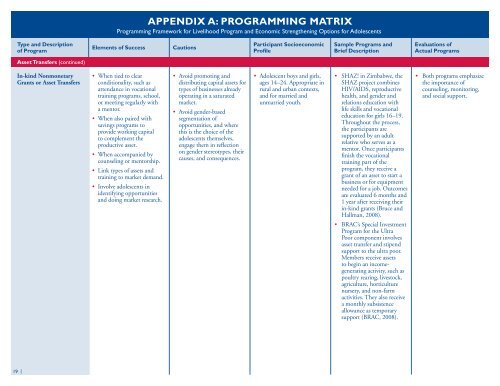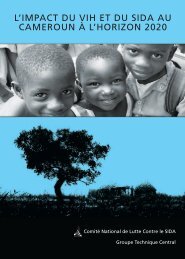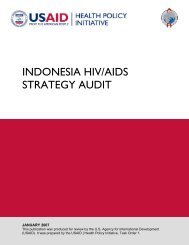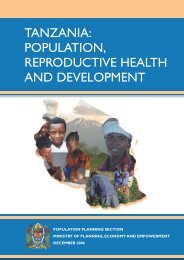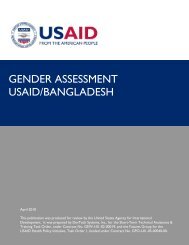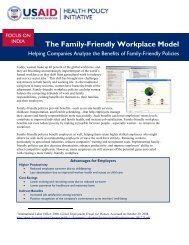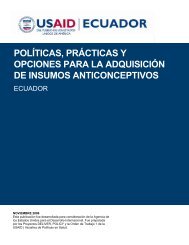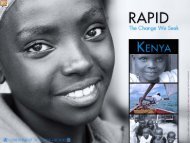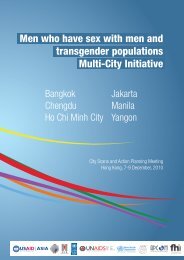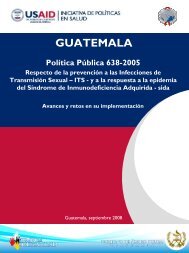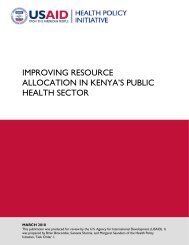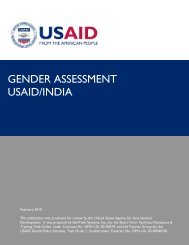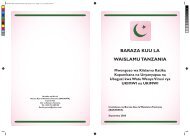APPENDIX A: PROGRAMMING MATRIXProgramming Framework for Livelihood Program and Economic Strengthening Options for Adolescents 1Type and Descriptionof ProgramElements of SuccessCautionsParticipant SocioeconomicProfile2Sample Programs and3Brief DescriptionEvaluations ofActual ProgramsAsset Transfers (continued)Scholarship Programs forGirls—differ slightly fromCCT programs in that thescholarship is provided tooffset school fees, books,and related educationalcost for girls who otherwisewould not attend school.Some of these programs aresimilar to CCTs, as theyspecifically transfer funds tothe girl’s family to offset theloss of her labor in additionto paying for educationalcosts.• Similar to CCT programs(see above).• Similar to CCT programs(see above).• Scholarship programsmay not provide sufficienteconomic incentivesdirectly to adolescents ifthe adolescents are not alsogiven some direct controlover a part of the resourcesfor costs not usuallyincluded, such as pocketmoney, transport money,and even clothing, whichprevent really poor childrenfrom attending school,even if their direct schoolfees are paid.• For families, whereadolescents either provideincome or substitutelabor for adults who workoutside of the household,scholarships might have tobe combined with someoffset payment to the familyto compensate for the lostwages or labor of the youthattending school.• Particularly for girls ages10–19, with an emphasison girls of this age in ruralareas; and girls 12–19 inurban areas who are unlikelyeither to finish elementaryschool or go on to secondaryschool.• These programs are usuallyfor unmarried girls. It wouldbe worthwhile to push theenvelope by trying to seeif direct compensation fortheir labor to married girls’husbands or in-laws mightprovide incentives to allowthem to attend school.• Camfed supports, mentors,and pays for girls inTanzania, Ghana, Zambia,and Zimbabwe to stayin school through thesecondary level or attendvocational training. Girlsbecome part of the Camaalumni network aftercompleting the program(Camfed International,2006).• Grameen Bank (Bangladesh)provides loans for schoolfees of clients’ children.Fifty percent of funds areearmarked for girls andthe remaining 50% aredistributed to boys andgirls according to merit.Scholarships are givenannually (“ScholarshipProgram,” 2009).• Through the Juntos programin Peru, women must signa four-year agreement tomaintain 85% attendancefor their children in returnfor conditional cashtransfers (Jones et al., 2007).• The Bangladesh FemaleSecondary School StipendProgram provides girlswith scholarships andoffers financial incentivesfor at least 85% schoolattendance, remainingunmarried until at leastage 18, and passing exams(DFID, 2006).• In regions where theJuntos program hasbeen implemented,there has been a markedincrease in schoolattendance, change inparents’ attitudes towardeducation, and increasedinvolvement of parentsin children’s education(Jones, 2007).• The Bangladesh FemaleStipend Programhas increased schoolattendance by 12percentage points in ruralareas (DFID, 2006).• Scholarships and cashtransfers must beaccompanied by effortsthat make schools safefor girls. For moreinformation on safeschools, see the USAIDSafe Schools Program,which includes programassessments in Malawi,Ethiopia, Ghana, andJamaica (USAID, 2003).Also see UNICEF, 2004.18 |
APPENDIX A: PROGRAMMING MATRIXProgramming Framework for Livelihood Program and Economic Strengthening Options for Adolescents 1Type and Descriptionof ProgramElements of SuccessCautionsParticipant SocioeconomicProfile2Sample Programs and3Brief DescriptionEvaluations ofActual ProgramsAsset Transfers (continued)In-kind NonmonetaryGrants or Asset Transfers• When tied to clearconditionality, such asattendance in vocationaltraining programs, school,or meeting regularly witha mentor.• When also paired withsavings programs toprovide working capitalto complement theproductive asset.• When accompanied bycounseling or mentorship.• Link types of assets andtraining to market demand.• Involve adolescents inidentifying opportunitiesand doing market research.• Avoid promoting anddistributing capital assets fortypes of businesses alreadyoperating in a saturatedmarket.• Avoid gender-basedsegmentation ofopportunities, and wherethis is the choice of theadolescents themselves,engage them in reflectionon gender stereotypes, theircauses, and consequences.• Adolescent boys and girls,ages 14–24. Appropriate inrural and urban contexts,and for married andunmarried youth.• SHAZ! in Zimbabwe, theSHAZ project combinesHIV/AIDS, reproductivehealth, and gender andrelations education withlife skills and vocationaleducation for girls 16–19.Throughout the process,the participants aresupported by an adultrelative who serves as amentor. Once participantsfinish the vocationaltraining part of theprogram, they receive agrant of an asset to start abusiness or for equipmentneeded for a job. Outcomesare evaluated 6 months and1 year after receiving theirin-kind grants (Bruce andHallman, 2008).• BRAC’s Special InvestmentProgram for the UltraPoor component involvesasset transfer and stipendsupport to the ultra poor.Members receive assetsto begin an incomegeneratingactivity, such aspoultry rearing, livestock,agriculture, horticulturenursery, and non-farmactivities. They also receivea monthly subsistenceallowance as temporarysupport (BRAC, 2008).• Both programs emphasizethe importance ofcounseling, monitoring,and social support.19 |


